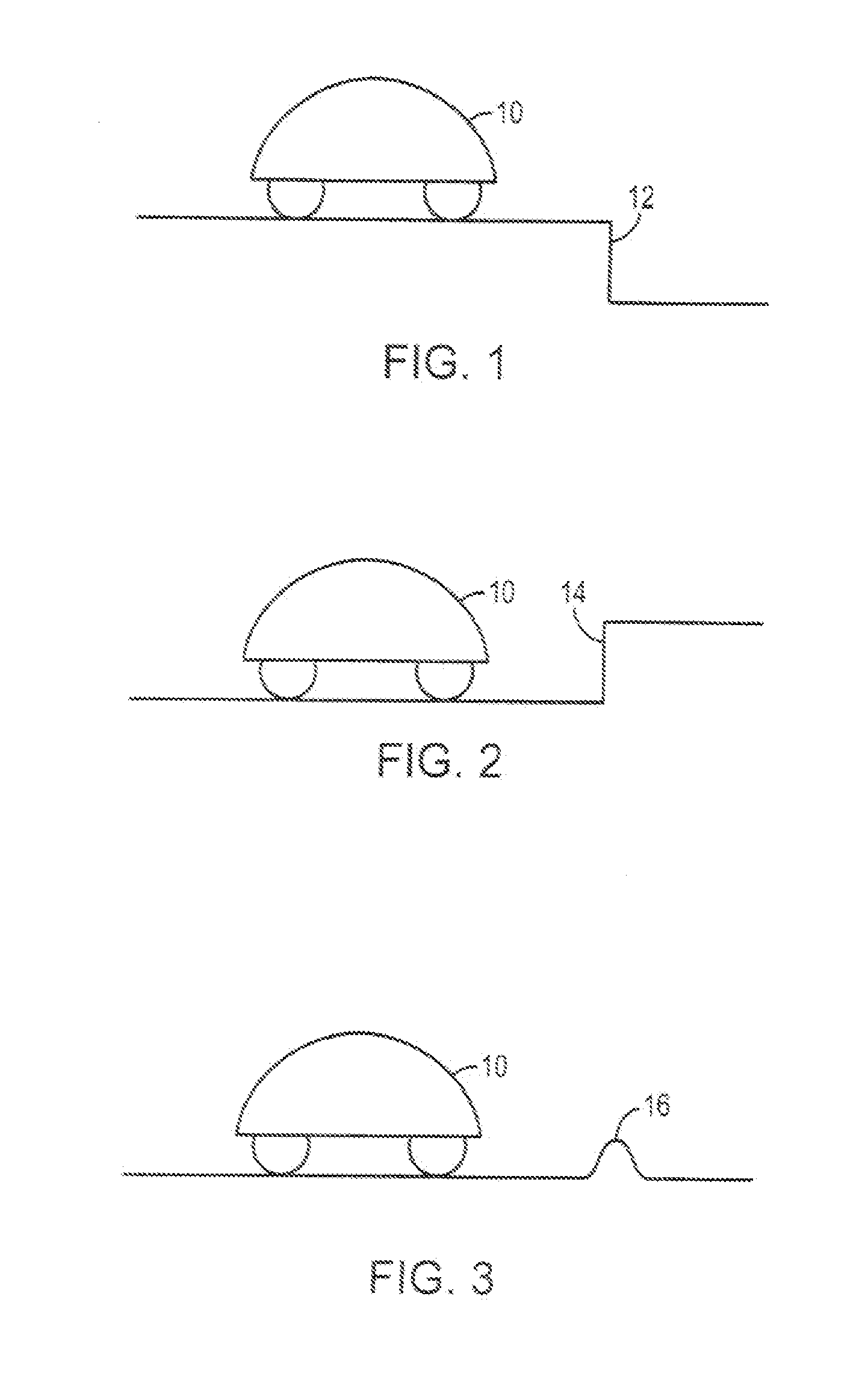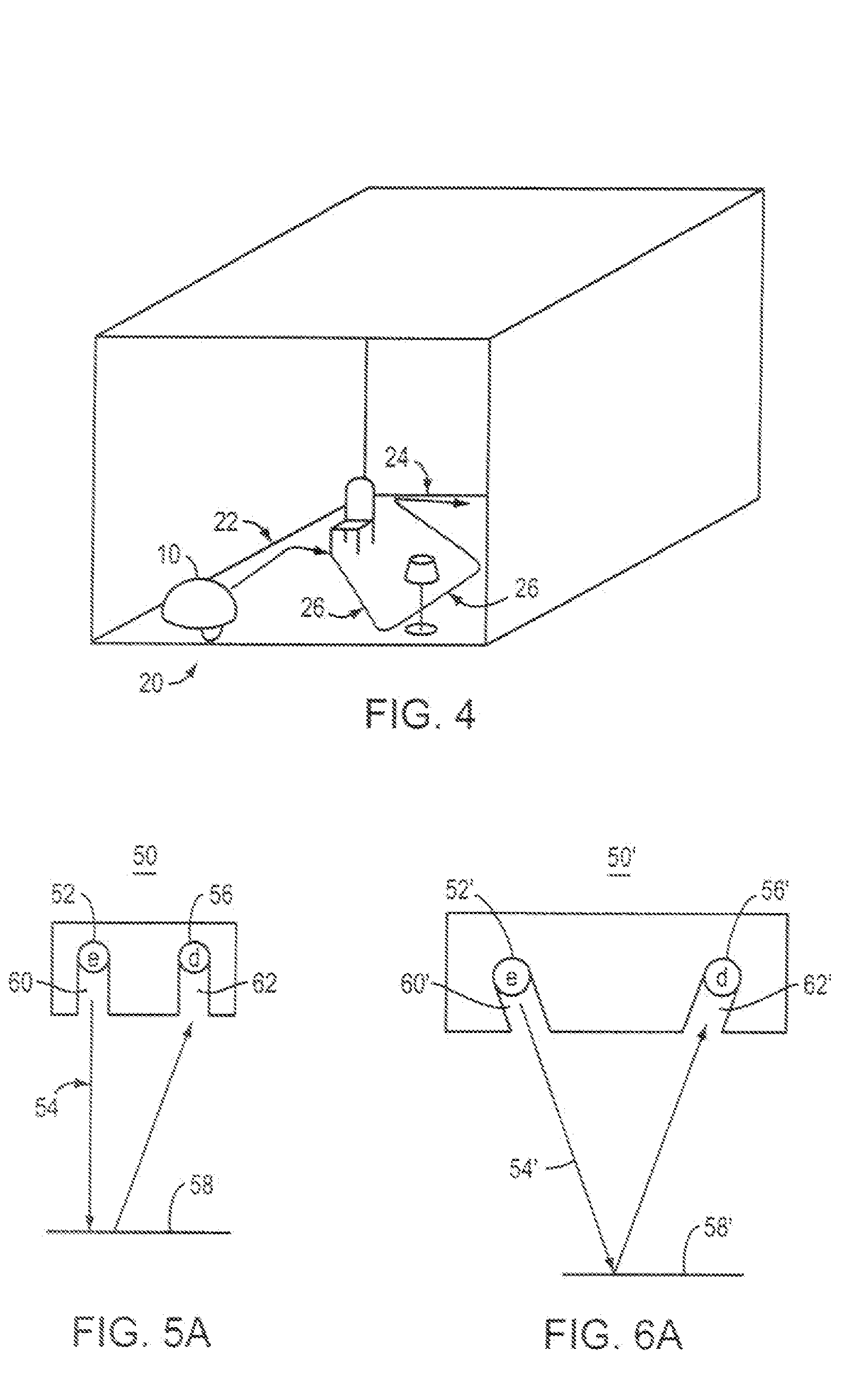Obstacle Following Sensor Scheme for a mobile robot
a mobile robot and sensor scheme technology, applied in manipulators, program control, instruments, etc., can solve the problems of unsuitability for consumer markets, high cost and power requirements of these types of robotic subsystems, and the available sensor subsystems such as sonar sensors for detecting obstacles on or in the floor or in the order of walls, etc., to achieve the effect of reducing the cost of the system, and improving the accuracy of the system
- Summary
- Abstract
- Description
- Claims
- Application Information
AI Technical Summary
Benefits of technology
Problems solved by technology
Method used
Image
Examples
Embodiment Construction
[0072] Robotic cleaning device 10, FIG. 1 can be configured to dust, mop, vacuum, and / or sweep a surface such as a floor. Typically, robot 10 operates in several modes: random coverage, spiral, and a wall-following mode, as discussed in U.S. Pat. No. 6,809,490 and in the Background section above. In any mode, robot 10 may encounter downward stair 12 or another similar “cliff,” upward stair 14, FIG. 2, or another similar rise, and / or obstacle 16, FIG. 3. According to one specification, the robot must be capable of traversing obstacles less then ⅝″ above or below floor level. Therefore, robot 10 must avoid stairs 12 and 14 but traverse obstacle 16 which may be an extension cord, the interface between a rug and hard flooring, or a threshold between rooms.
[0073] As delineated in the background of the invention, presently available obstacle sensor subsystems useful in connection with robot 10 are either too complex or too expensive or both. Moreover, robot 10, depicted in FIG. 4, is des...
PUM
 Login to View More
Login to View More Abstract
Description
Claims
Application Information
 Login to View More
Login to View More - R&D
- Intellectual Property
- Life Sciences
- Materials
- Tech Scout
- Unparalleled Data Quality
- Higher Quality Content
- 60% Fewer Hallucinations
Browse by: Latest US Patents, China's latest patents, Technical Efficacy Thesaurus, Application Domain, Technology Topic, Popular Technical Reports.
© 2025 PatSnap. All rights reserved.Legal|Privacy policy|Modern Slavery Act Transparency Statement|Sitemap|About US| Contact US: help@patsnap.com



